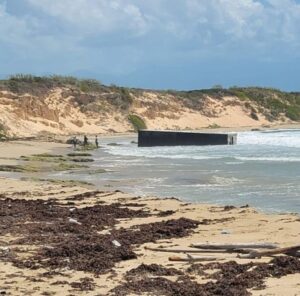Energy the wind’s way
TIRED of high monthly electricity bills, but unsure of an alternative source to meet your domestic energy needs? Think wind.
Now on the market are mini wind turbines, which are designed to serve the needs of the domestic consumer.
They come in varying sizes and are installed on rooftops, even as they generate power from some 300 watts to three megawatts. In the UK, they go for about £1,800 or J$234,000. In the United States (US), they cost between US$1,500 and US$2,000 or up to J$136,000.
Petroleum Corporation of Jamaica (PCJ) consultant and a man reputed for his knowledge of alternative energy sources, Raymond Wright, has given his stamp of approval to the technology. In fact, he has gone so far as to recommend what one can combine wind energy with in order to secure maximum benefits.
“I would recommend to a household that they install a hybrid system with solar photovoltaic panels and a small wind turbine. Both of them would feed into a battery bank so when you don’t have sunlight you would have wind so the batteries are always being charged,” he told Earth Smart. “The other system I would recommend is a system where you have a diesel generator and a wind turbine so that if the wind is not providing the energy, then the diesel chips in. So, you will have your energy consistently.”
In looking at wind as an alternative energy source, bear in mind the fact that it may also be used to pump water, thus making it ideal for people with small wells on their property.
“For pumping water, you use a different type of wind turbine that can operate at lower wind speeds,” said Wright, noting that getting the system up and running could cost up to about J$12,000 – including earth works and installation.
But perhaps the greatest benefit of the technology – outside of the mega cost savings over time – is that you can take your wind turbine down during periods of ‘bad’ weather, such as Hurricane Dean.
“With some of these small wind turbines, you are able to pull them down in the event of a hurricane and reinstall them the following day when you will be up and running while other people don’t know what to do,” Wright said. “(And) the pay back period over time is probably of the order of some six or so years. After that, you don’t spend anything on electricity – apart from minimal maintenance. So it allows a certain level of independence, which is perfect.”
To contact Petre Williams, e-mail: williamsp@jamaicaobserver.com












